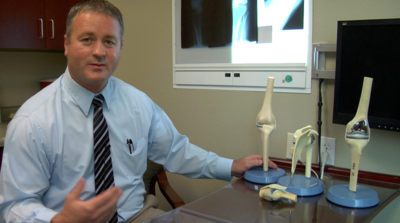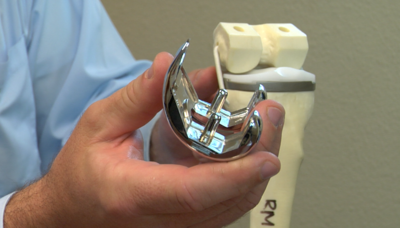 As May, which just so happens to be National Arthritis Awareness Month, comes to a close, it only seems right to take an in-depth look at this widespread disease, as well as the ways that 3D printing technology is helping patients to overcome it. Arthritis is becoming more rampant than ever, listed as the number one cause of disability and affecting over 50 million Americans, which is project to grow to around 67 million by 2030. The word arthritis is essentially defined as ‘joint inflammation’, and is an overarching medical term that describes around 200 rheumatic diseases that negatively impact the joints, surrounding cartilage, and connective tissues.
As May, which just so happens to be National Arthritis Awareness Month, comes to a close, it only seems right to take an in-depth look at this widespread disease, as well as the ways that 3D printing technology is helping patients to overcome it. Arthritis is becoming more rampant than ever, listed as the number one cause of disability and affecting over 50 million Americans, which is project to grow to around 67 million by 2030. The word arthritis is essentially defined as ‘joint inflammation’, and is an overarching medical term that describes around 200 rheumatic diseases that negatively impact the joints, surrounding cartilage, and connective tissues.
3D printing has been used on numerous occasions to help enhance arthritis treatment, and a few have come about during this recent month of awareness. Earlier this May, we reported on the Pfizer Global Research teams utilization of MakerBot 3D printers to help them research and test a new line of osteo and rheumatoid arthritis medications. After that, we saw a 3D printing expert from the University of Waterloo produce a printer capable of 3D printing bone-like structures from calcium polyphosphate. Even last year, a number of assistive arthritis tools were 3D printed to ease certain tasks for those with the disease.
Recently, Randy Clark, a doctor from the Utah-based Coral Desert Orthopaedics of St. George, detailed how improved 3D printing technology has led to better treatment methods for arthritis. Thus far, 3D printing is already capable of assisting in treating the most common form of the disease, which is osteoarthritis in the knee, generally caused by worn-down joints from overuse or abuse. There are a number of self-prescribed treatments to help alleviate this type of arthritis, such as exercise, staying healthy, and keeping the muscles around the joint strong. But some may require surgery at some point, which is where 3D printing technology has started to come into play.With these patient-specific 3D printed implants, surgeons believe that those suffering from arthritis could have more joint motion, less overall pain, and maybe even a quicker recovery. All of these benefits come at about the same cost as traditional implant methods, but did require a fair amount of trial-and-error to get right.“With that model, they can build implants that just fit the specific anatomy of that patient,” said Dr. Clark. “It’s attractive as a patient to have a custom implant that will only fit them, and with it come jigs for the surgeon so they can make precise cuts so that the implant will fit perfectly. Instead of having to make something off-the-shelf fit your anatomy, you have an implant and cutting jigs that are just for you, and wouldn’t work for anyone else.”
Prior to using a plastic socket, which is now used with 3D printed implants, surgeons were using a metal ball with the implant instead, which led to metal ions causing joint inflammation and loosened implants. Dr. Clark and orthopedic surgeons around the world have taken notice of what 3D printing technology has to offer them, and as cases involving arthritis continue to increase, it seems that this new style of treatment could not have come at a better time. Discuss how this technology is affecting medicine in the 3D Printing & Arthritis forum over at 3DPB.com.
https://vimeo.com/167950807
[Source: KCSG]
Subscribe to Our Email Newsletter
Stay up-to-date on all the latest news from the 3D printing industry and receive information and offers from third party vendors.
Print Services
Upload your 3D Models and get them printed quickly and efficiently.
You May Also Like
Consolidation in AM: How 2025 Is Shaping the Industry’s New Normal
The first half of 2025 has been marked by a clear shift in the additive manufacturing (AM) industry. Companies are no longer just focused on developing new tech by themselves....
Etsy Design Rule Change Reduces Selection of 3D Printed Goods
Online marketplace Etsy has implemented a rule change requiring all 3D printed goods on the site to be original designs. The update to the site’s Creativity Standards states, ¨Items produced using...
U.S. Congress Calls Out 3D Printing in Proposal for Commercial Reserve Manufacturing Network
Last week, the U.S. House of Representatives’ Appropriations Committee moved the FY 2026 defense bill forward to the House floor. Included in the legislation is a $131 million proposal for...
Transforming From Tourist to Native: Duro CEO Michael Corr Explains Why the Company Rebuilt its PLM Software on AI
In these early innings of the AI boom, many market analysts have expressed concern that AI spend has gotten too far ahead of the technology’s proven ability to deliver significant...


































